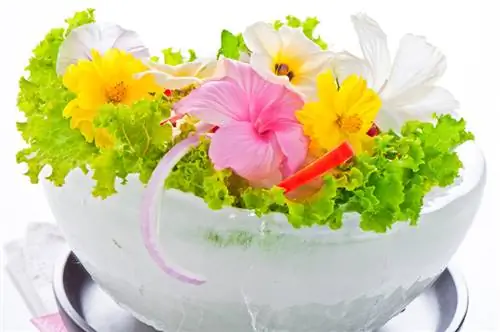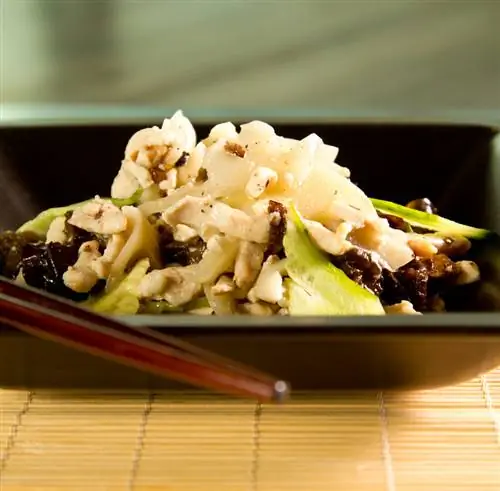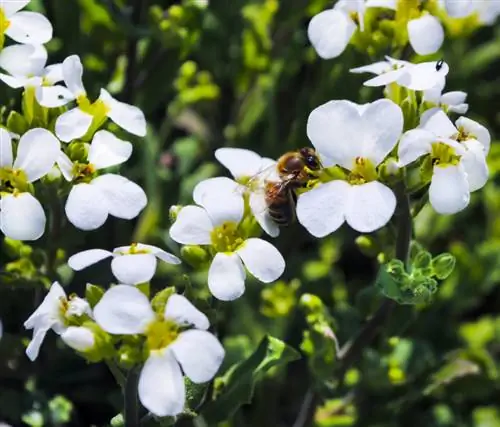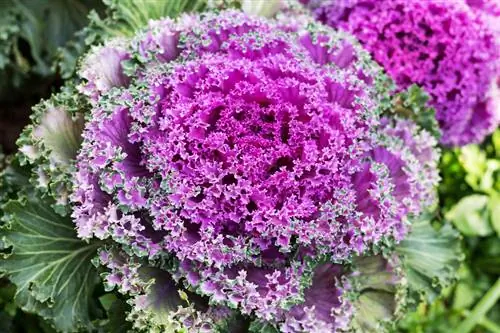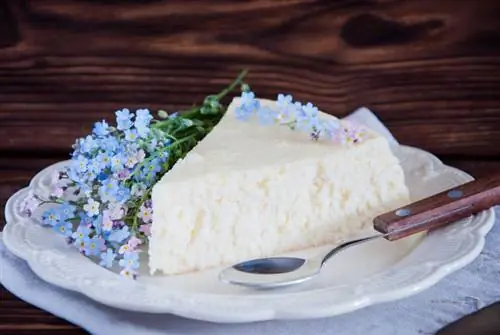- Author admin [email protected].
- Public 2023-12-16 16:46.
- Last modified 2025-06-01 06:02.
When spring arrives, many gardeners long for the first vegetables from their own green paradise. You don't have to wait long if you have planted daylilies. Your leaf shoots can be harvested as early as March/April. But not only they are edible

Are daylilies edible and how to use them in the kitchen?
Daylilies are edible and popular in Chinese cuisine. All parts of the plant can be eaten, especially buds, leaf shoots and flowers. They taste sweet, fresh and spicy and leek-like. They are used in salads, soups, fried or deep-fried.
Daylilies - the insider tip of Chinese cuisine
Anyone who previously believed that daylilies were poisonous is wrong. In East Asia, these plants - particularly the yellow-red daylily - are extremely popular in the kitchen. Chinese cuisine in particular has valued daylilies for thousands of years. The daylilies are grown specifically for the purpose of serving as food!
Which parts of plants are edible?
All parts of the plant can be eaten. The buds and leaf shoots are particularly popular. You can also prepare a lot with the flowers. The more mature leaves, roots and seeds of daylilies are rarely used in the kitchen.
What do buds, flowers, leaves and roots taste like?
The buds taste crisp, fresh and slightly sweet. When raw, the flowers have a pleasant, sweet note that comes from the nectar. They also taste good when dried. The leaves are sweet and subtly leek-spicy and the roots have a taste reminiscent of nuts or chestnuts and a consistency of potatoes.
Preparation and recipes with daylilies
This is how the plant parts are usually prepared:
- Buds: raw, fried, boiled, fried, pickled, baked
- opened flowers: raw, dried, cooked
- Leaf shoots: raw, cooked
- ripe leaves: steamed, cooked
- Roots: raw (grated), cooked
- Seeds: crushed, ground
The following recipe ideas for the plant parts of daylilies are common:
- Eat the buds raw or fry them in oil
- Flowers for salads, yoghurt, quark, ice cream, cakes, bread toppings, rice dishes, soups, filled with minced meat
- Leaf shoots for soups (prepare like asparagus)
- ripe leaves for salads, soups, with pasta, stewed in s alt water
- Roots for salads, potato substitutes, casseroles, raw and grated in salads
- Seeds crushed in soups
Tips & Tricks
Before eating the flowers, the stamens in the middle should be removed. They are not very tasty and have an unpleasant note. The taste of the flowers is better without them.

